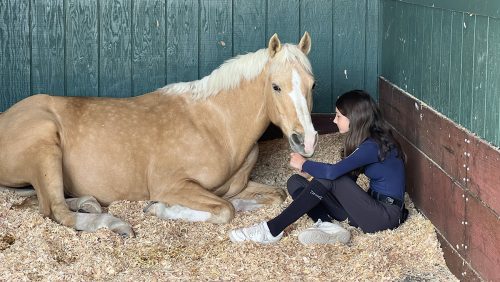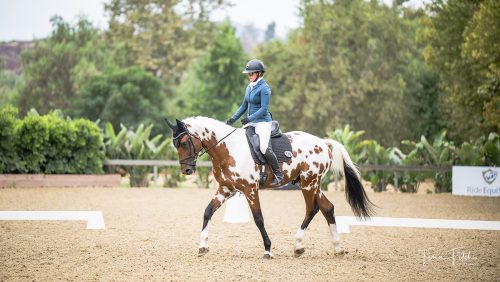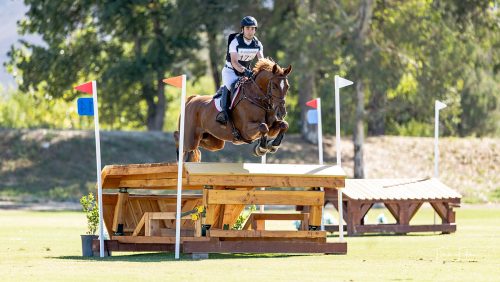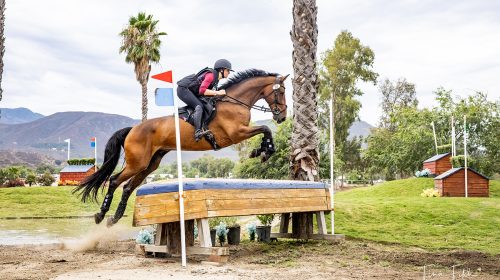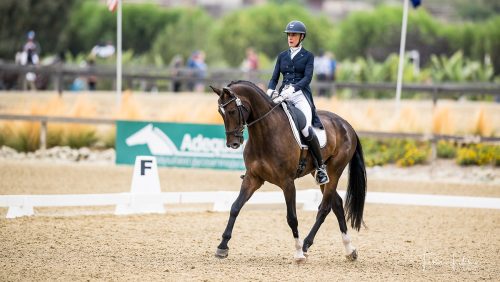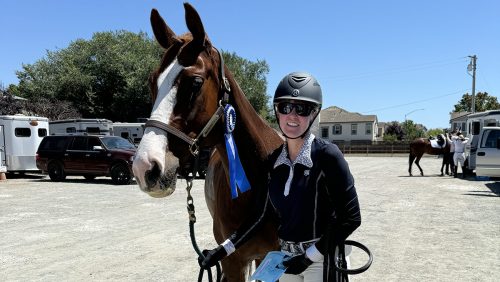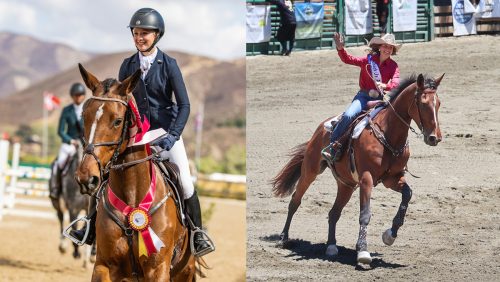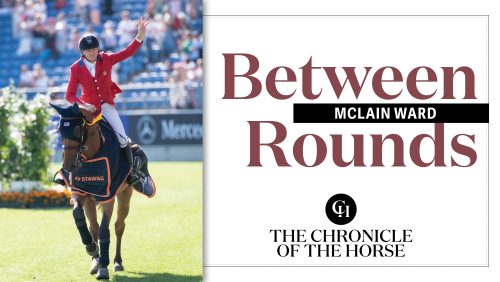In the wake of the tragic death of Philippa Humphreys and Skyler Decker’s Inoui Van Bost at the Jersey Fresh International (N.J.), eventers are taking a hard look again at ways to make the sport safer.
In the June 6 & 13 issue of the Chronicle, we asked three riders how they feel about their sport and what can be done to make it safer. In those print pages, Will Faudree, Tamra Smith and Doug Payne weighed in with their thoughts and how the deaths had affected them.
Regular Chronicle blogger and four-star eventer Matt Brown also had some thoughts that he shares below.
In general the sport is getting safer, but we have to be willing to continually reevaluate our direction and revisit our past mistakes in order to keep moving forward. We can’t be afraid of making changes. Nothing is permanent—if we make a change down the road, we can reevaluate and decide if we made the right decision or not.
There seem to be two main arguments when it comes to safety in eventing; first, that the sport is just too dangerous period. The horses do not have a choice in whether to compete or not, and it is too much of a risk to the horse to make them do it.
Second, this sport is inherently dangerous and attempts to make it less dangerous have already and will continue to change the sport in fundamental ways that only serve to kill the sport.
Both arguments have some truth to them, but both miss the mark in my opinion. The first argument has some validity; it is a very dangerous sport, and as riders we decide to accept that risk for ourselves, but we also decide to take that risk for the horses. There is definitely an argument to be made about the ethics of what is an acceptable amount of risk for a person to take with the life of an animal that is in their care.
As stewards of our horses where is the line of acceptable risk? Is asking them to work while carrying a rider too much to ask? What about jumping? Racing?
This is obviously a much larger conversation, but this is where I think the people making the first argument are coming from. I personally believe, like U.S. Chef D’Equipe David O’Connor, that the horses at the top of the sport love what they do and that at that level it is not possible to “make” them do it if they don’t want to.
I know that when my horses are on cross-country they are engaged and wanting to go do the job. They feel happy and free. No one could argue that they are of course happy and free when they are in their field too, but I believe there is a difference.
ADVERTISEMENT
The second argument feels like an excuse. It is an argument generally made by people inside the sport who react defensively every time someone wants to change “their” sport. I can completely understand this reaction. I feel very protective of eventing too.
I love our sport and want it to be just like it was back when I started competing. But the reality is that unless the sport changes to fit a modern world it will not last as a sport. Yes, of course the sport is dangerous, and as long as we are galloping at solid obstacles it will remain dangerous.
But it is very possible to change things to make it safer, and we as horseman have a responsibility to do that. I personally believe it is possible to change things in ways that will make the sport safer for horses and riders and keep the sport viable in the modern age without compromising the values that make eventing unique among horse sports.
But we have to be able to have constructive conversations about the direction of the sport. We need to not be afraid of asking hard questions and being pushed by well-meaning people to find solutions to these questions.
Those things might fundamentally change the sport. As much as I want the sport to be like it was decades ago, it’s not going to be, and I want all the things that make eventing great—the horsemanship, the aggressiveness or the feeling of going out and galloping at these big jumps, the endurance of it, the sportsmanship of it—I don’t want any of those things to change. They don’t necessarily have to change in order to make the sport safer, to make it more Olympic-friendly (although I’m not sure the current FEI proposed changes hit the mark), to make it more spectator-friendly.
We can keep all of the things that we love about the sport, but at the same time make it jibe with a modern eventing sport. Not try to make it what it was two decades ago, but make it something modern for today that still has all of the things that we loved about it from the beginning of the sport.
[At Jersey Fresh] I watched several other horses nearly [have a big problem at the CCI** combination at the end of the course]. I think after that second [horse] fall, that fence should have come off the course. I think [the fence where Humphreys fell] should have come off, and I think the corner in the arena [for the CCI***] should have come off. In my opinion, there’s no reason to leave them on. I don’t understand—if somebody dies at a fence, why leave it on?
Maybe it wasn’t the fence’s fault, maybe it was the rider’s fault, but wouldn’t it be safer just to take it off until we have time to figure out?
The whole first half of my ride, I was not galloping at tables. I was feeling very conservative when I was cantering down to the tables. It wasn’t until the second half of the course, which is where that table was, that I finally started trusting myself and my horse a little more to go ahead and start galloping down to them.
There couldn’t have been a rider out there that day, even if they didn’t know the outcome of Philippa’s fall, who could have felt that confident going out.
ADVERTISEMENT
To be perfectly honest, at the end of the day, that was the worst day of eventing that I’ve experienced, and I was at Galway [Downs (Calif.) in 2006] when Mia [Eriksson] died, and that was horrible. There might have even been another couple of falls that day. But this day of eventing [at Jersey Fresh], people were falling. I don’t mean to be placing blame on anybody for that. I think there were issues with the course that looking back, maybe we should have known that some of these jumps could potentially cause problems.
If there are two horse falls at one fence, the fence needs to come off the course. That needs to be more objective, less subjective—no matter why or how that happens, the jump comes off the course. I think there could be some more straightforward, non-subjective rules when it comes to [how a] horse falls or if a jump is riding poorly. I think the ground jury needs to be more OK with pulling a jump off the course.
Fence safety is the biggest issue. We have some evidence and some statistics when it comes to fence design and the types of fences that tend to cause falls. I do think that there are ways for course designers to ask the questions they want to ask, but do it with a safer shape of the jump.
I don’t think it means they need to go away from upright jumps, but how they present those jumps to the horses—what kind of ground lines they have, where they place those jumps on the course—I think all of that can be done in a way that makes the jump have less possibility for a rotational fall.
We have the statistics right now to make those decisions, and we need to make those changes, and then we’re going to need to keep tracking them, and we’re going to need to make some more changes. I think we can certainly make more changes immediately based on the current information we have.
I do honestly think we’re headed in the right direction, and this was an unfortunate event and an unfortunate grouping of events that all came together on this one day. But we need a major conversation that is already happening. We need that big conversation to continue happening, and we need some very clear action to be taken based on those conversations.
People who are not ready to make changes need to get out of the way because the sport has to change. Like I said before, it’s possible to change the sport in a way that does not change the feel of it, but can make it more of a modern sport.
Matt Brown has been a lifelong student of the sport of three-day eventing, studying under some of the most respected names, including Derek di Grazia, Volker Brommann and Denny Emerson. He also credits horseman and rancher George Kahrl for helping him learn how to create a trusting relationship between horse and rider, even at the top levels of competition. As a young rider, Matt competed through the advanced level with his Appaloosa Maximum Speed, who was his mount for the FEI North American Young Rider Championships in 1993.
More recently, Matt has been named to the USEF High Performance Training Lists since 2013. In April of 2015, Matt and his wife Cecily moved from California to Cochranville, Pa., to continue chasing his dream of representing Team USA. In October, Matt and Super Socks BCF placed sixth in their first European competition at the Boekelo CCIO*** in the Netherlands. After being nationally listed for the third year in a row, Matt’s sights are set on Rio 2016 Olympic Games.
You can read all of Matt’s insightful blogs for the Chronicle here.







